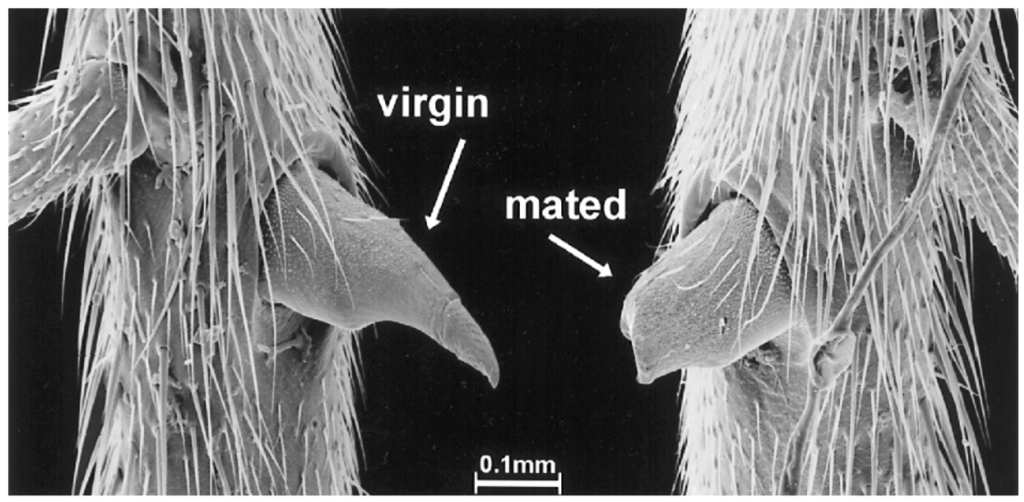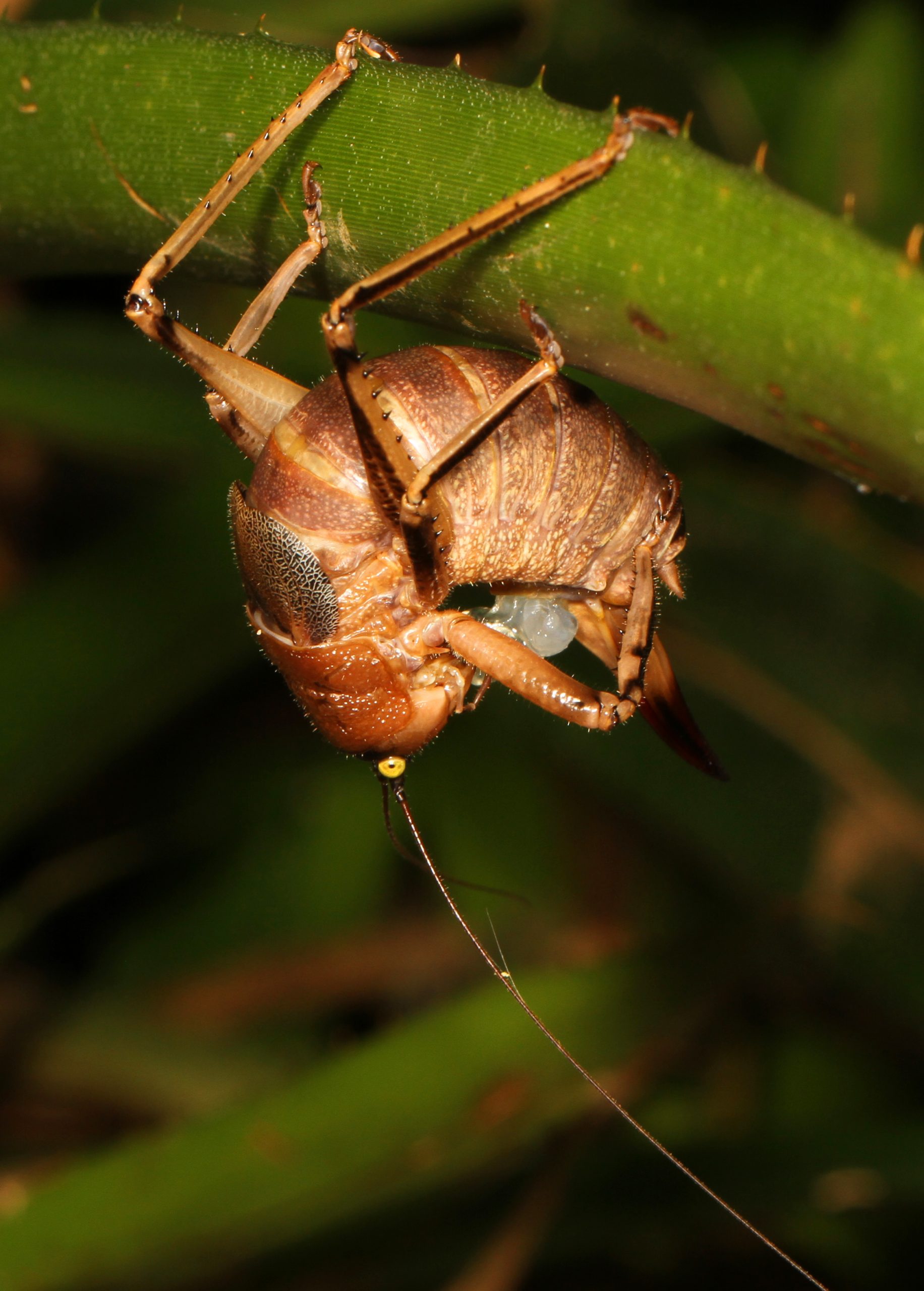9.5 Why be choosy about your mate?
As we previously discussed, the difference in gamete size and the amount of gametes produced predicts that females should be choosy about whom they mate with because eggs are more costly to produce than sperm. Therefore, females have a vested interest in protecting their eggs from males who are less fit. A female simply has more to lose by making a bad choice about her mate.
How do females decide whether a male is a suitable mate? There are several, non-exclusive models of how and why mating preferences evolve. Broadly, there are two types of fitness benefits that drive mate choice: direct and indirect benefits. Direct benefits increase the fitness of choosy individuals through material resources. Males will sometimes provide females with a food gift before mating. These resources, called nuptial gifts, provide nourishment to females that they may not otherwise get. For example, male great grey shrikes—a predatory bird—will present prey items like rodents, other birds, lizards, and large insects to females immediately before mating. A female great grey shrike will choose a mate according to the size of the prey item presented to her. Males that present larger prey are more likely to be chosen. Such is the case in many insects and spiders where males present these nuptial food gifts to females in the hopes that she will choose to mate with him. In this way, the size or quality of the nuptial gift can serve as another trait through which females can judge the quality of a potential mate.

In extreme cases, males will even sacrifice parts or all of themselves to females. For example, in some species of ground crickets, females receive a nuptial gift by chewing on a specialized spur structure on the male hind tibia (i.e. his leg) while mating. Most predatory species of preying mantids practice a type of extreme nuptial feeding known as sexual cannibalism, in which a female will eat her mate prior to, during, or after copulation (see the cover of this textbook for a gory image). Most often, a female mantid will begin feeding by biting off the head of a male, as they would with regular prey. Because copulatory movement in males is controlled by nerves in the abdomen, not the head, removal of a male’s head does not affect mating, sperm transfer, or proper fertilization. The reason for sexual cannibalism has been heavily debated. Experiments show that females on low quality diets are more likely to cannibalize her mates, compared with females given high quality diets. Some suggest that males that submit to females and are cannibalized gain a selective advantage by producing higher quality offspring. In any event, this type of sexual behavior is quite rare because the costs are often assumed to outweigh the benefits, particularly for males. However, the high prevalence of sexual cannibalism in several species of spiders gave rise to the common name “black widow spider”.

Some types of nuptial gifts are considered a direct benefit, because they enhance a female’s survival and reproduction. In contrast to direct benefits, indirect benefits increase the fitness of the offspring of a choosy individual. Typically, females who choose to mate with attractive males will benefit by producing offspring, specifically males, who are particularly attractive as well. As such, the attractive offspring will be more likely to attract females, and thus the choosy female’s genes will continue to spread—the ultimate goal of all living organisms. For example, in some species of insects, like katydids, the nuptial gift provided by males is packaged with sperm. The package is an edible gift called a spermatophore. These extra nutrients in the sperm are assimilated by the female and are thought to enhance the fitness of the offspring produced, thus increasing the probability that both the female and male continue to pass on their genes. Because indirect benefits enhance offspring fitness, they are often thought to be an extension of parental investment that males can make for their offspring. Therefore, these types of benefits can also be used by females to judge the quality of a potential mate.
[2]
- Kenneth M. Fedorka and Timothy A. Mousseau "TIBIAL SPUR FEEDING IN GROUND CRICKETS: LARGER MALES CONTRIBUTE LARGER GIFTS (ORTHOPTERA: GRYLLIDAE)," Florida Entomologist 85(2), 317-323, (1 June 2002). https://doi.org/10.1653/0015-4040(2002)085[0317:TSFIGC]2.0.CO;2 ↵
- Wikimedia CC BY-2.0 ↵

